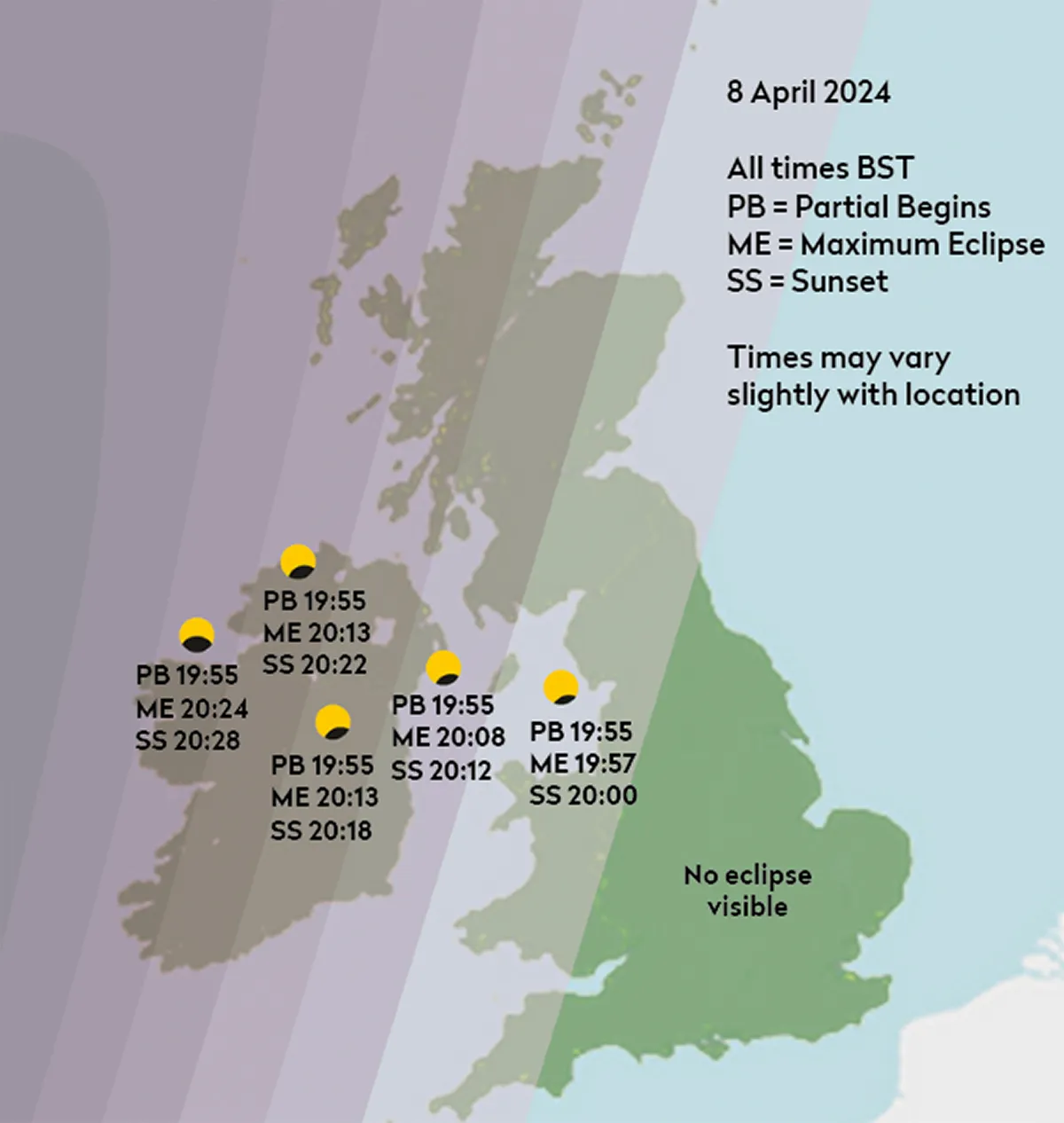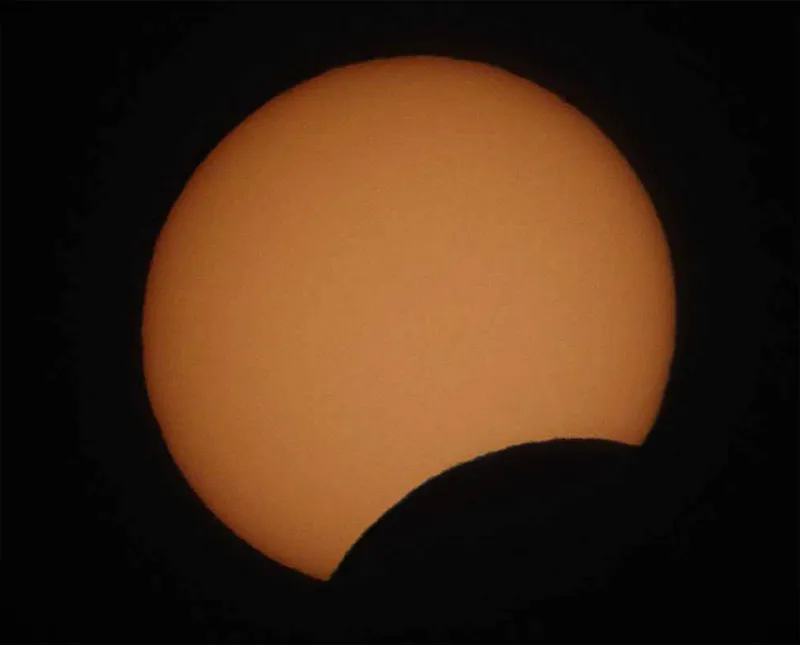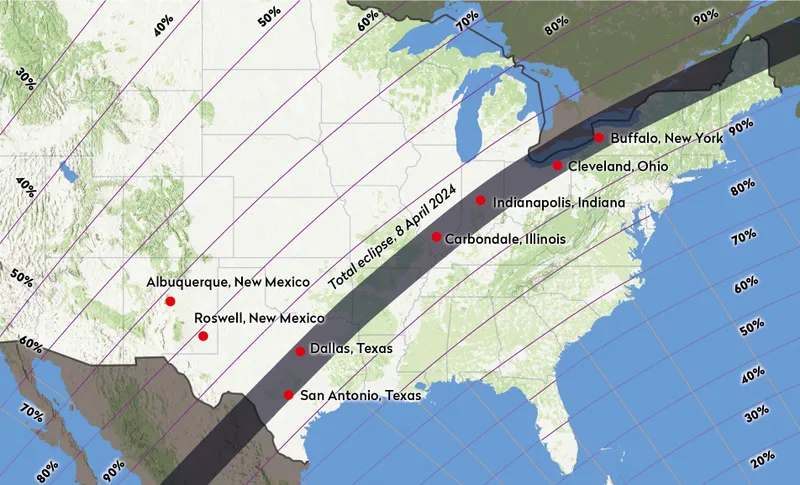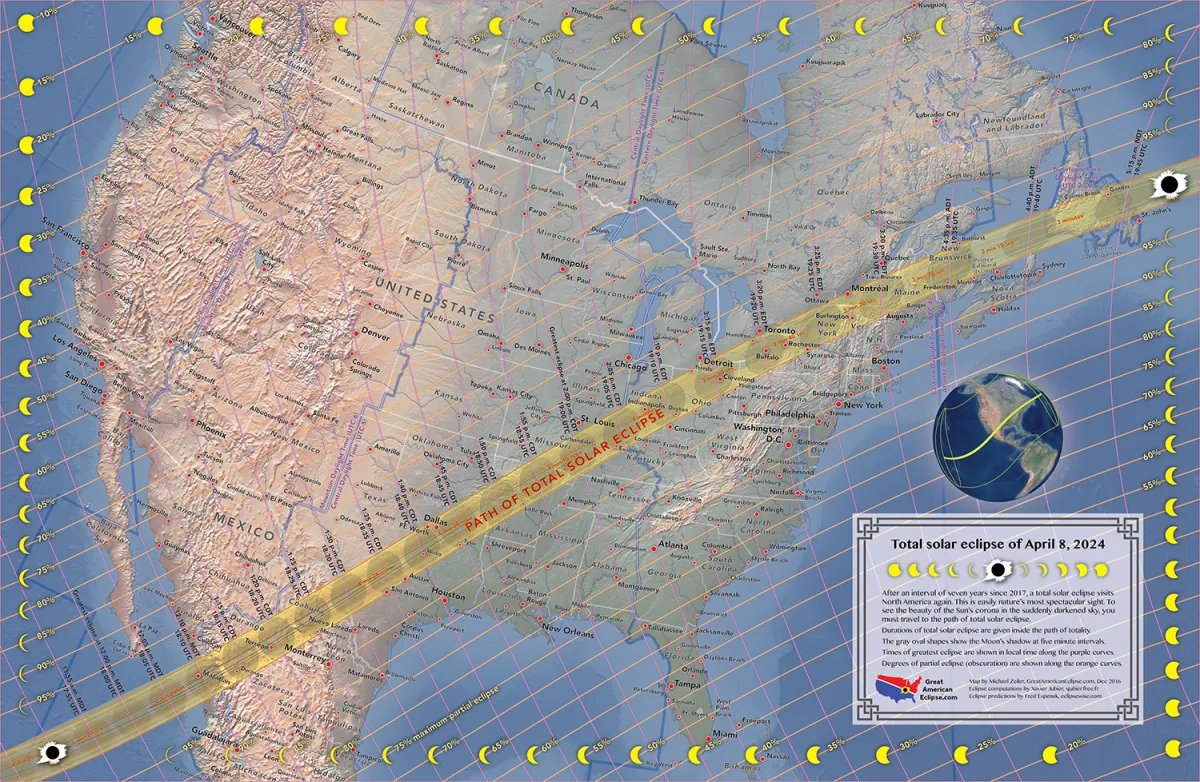Today's headlines will be dominated by a total solar eclipse crossing the USA, but did you know you'll be able to see the partial eclipse from the UK and Ireland this evening?
Very little matches the spectacle of a total solar eclipse and from the UK we’ll no doubt see the April 8 solar eclipse via news outlets and social media.
However, it’s possible to get a taste of what’s happening live if you’re located in the west of the UK or the Republic of Ireland, where a small partial solar eclipse will be visible.
If you do want to see totality, find out how to watch the April 8 eclipse online.
Find out when the next eclipse is visible
April 8 eclipse from UK and Ireland

A total solar eclipse is visible along a narrow path that passes across the USA on 8 April 2024.
Having already experienced one back in 2017, the US will be ready for 2024’s total.
Unfortunately, in the UK and Ireland, observers don’t get to experience a total solar eclipse.
But there is the potential to join in the event and feel a connection with it, as long as you are in the west of the UK or Ireland
As Earth is a globe, from such locations you'll be able to see a partial solar eclipse occurring as the Sun sets.
This can be quite the spectacle in its own right.
The amount of eclipse seen varies with location, those further to the west getting the best views.
Even if you aren’t in a good location but have the means to move, you might still get to see something.
Total vs partial solar eclipse

Totality refers to the view that you get when the Moon completely covers the Sun’s disc.
As the Moon trundles east in the sky relative to the Sun’s position, the Moon’s shadow moves west–east over Earth’s surface, more often than not at an inclined north or south angle.
It’s the Moon’s umbral shadow that gives rise to totality, while the surrounding weaker penumbral shadow marks the area where a partial solar eclipse is experienced.
As the Moon’s shadow crosses Earth, its umbral shadow creates ‘the path of totality’, a corridor that varies between 140km and 200km wide during the 2024 eclipse.
In order to experience totality, you’d need to be somewhere along this path, preferably close to its centreline.
The path of the penumbral shadow is wider, and as it crosses Earth’s globe it can become quite elongated.

What you'll see from the UK and Ireland
On 8 April, the penumbral shadow crosses western parts of the UK and Ireland, giving these areas a chance to see something of the eclipse event.
As Earth is a globe, from the UK the Sun will be setting, giving rise to the prospect of a sunset partial solar eclipse.
Given clear skies, this could be quite stunning to see.
The event should only viewed through eclipse glasses or through a telescope or equivalent fitted with a certified solar filter.
A low Sun may look docile, but it’s unwise to treat it any differently to a higher, bright Sun.
Another safe option would be to view the eclipse through a narrowband filter, such as hydrogen-alpha or calcium-K.
The further west you get, the greater the starting altitude of the eclipse and the more of the eclipsed Sun you’ll see.
The weather will play a critical role too; any thin or patchy cloud at low altitude could cover those final moments before sunset, when the eclipse is nearing its maximum coverage.
Being a sunset event, this will be perfect for photography, again with the usual safety caveats.
Find out more in our guide on how to photograph the April 8 eclipse from the UK and Ireland.

The April 8 partial eclipse may be seen from most of Wales, Scotland, northwest of England and the extreme southwest.
The whole of Northern Ireland and the Republic of Ireland can also see the partial eclipse.
Weather will be a key factor with this event. Partially cloudy skies contain cloud and gaps.
At low altitude, as when the Sun is setting, the size of gaps is lessened by foreshortening.
If you're attempting to view the eclipse, use a certified safety filter or solar eclipse glasses from a reputable supplier.
A low Sun may look safe but it isn’t and still has the capability to damage eyesight.
If you manage to see or photograph the April 8 solar eclipse from the UK and Ireland, let us know! Email contactus@skyatnightmagazine.com

